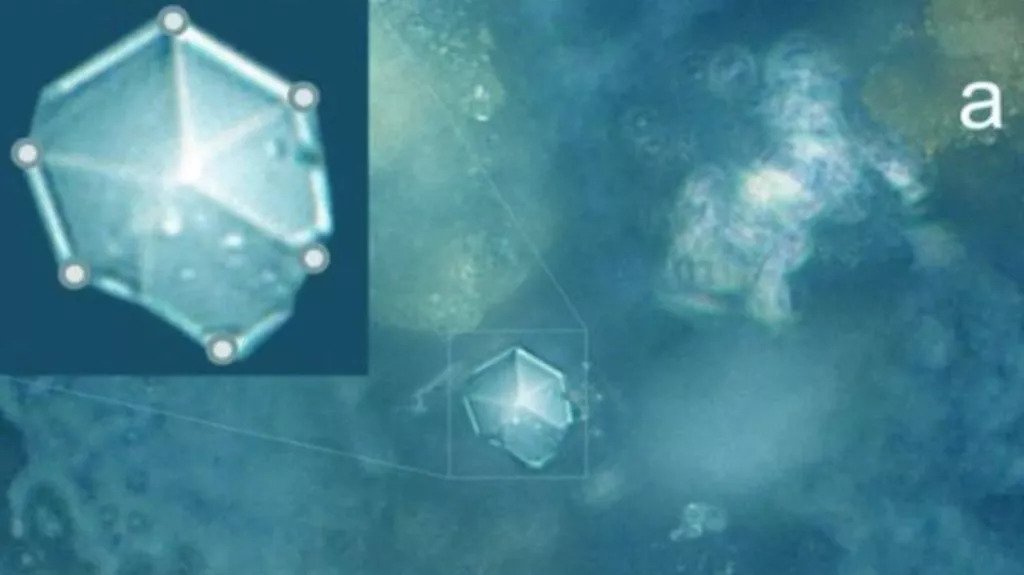Scientists investigating the remains of the Chelyabinsk meteorite found previously unseen crystals in them. They suspect that it is buckminsterfullerene and polyhexacyclooctadecane formed at the time of the explosion of the “space guest”.

Chelyabinsk meteorite
Researchers of the meteorite that exploded in 2013 over the city of Chelyabinsk discovered a new type of crystals that had not been previously encountered in nature on Earth. They have a microscopic size and are contained in dust thrown into the air during the explosion.
The Chelyabinsk meteorite had a diameter of 18 meters and weighed about 11 thousand tons. It entered the Earth’s atmosphere at a speed of 67 thousand km/h and exploded at an altitude of more than 23 kilometers. The force of the explosion was about 30 times greater than the bomb dropped on Hiroshima, so most of its mass turned into dust, which slowly began to settle in the atmosphere.
Fortunately, before that, the Earth was covered with a thick layer of snow, thanks to which scientists were able to collect a considerable amount of dust. After that, they began to study them under a microscope. Unexpectedly, very small crystals were found among the fragments to be identified, which were not similar to anything known.
What are previously unseen crystals really like?
Scientists began studying dust with more powerful electron microscopes and found even more such crystals. They were very small, which made it impossible to identify them. Therefore, X-ray phase analysis was applied, which showed that the objects under study consist of layers of graphene, which people obtained artificially only a couple of decades ago.
One could make a sensational conclusion that scientists have discovered something obviously artificial that has flown to us from outer space. But it was the X-ray phase analysis that prompted the decision about what the unprecedented crystals really are.
They are found in two types: almost spherical shells and hexagonal rods. According to scientists, the first are buckminsterfullerene, and the second are polyhexacyclooctadecane. And although both substances do not occur in nature, they definitely arose under the influence of high pressure at the time of the explosion.
According to www.space.com
Follow us on Twitter to get the most interesting space news in time
https://twitter.com/ust_magazine

